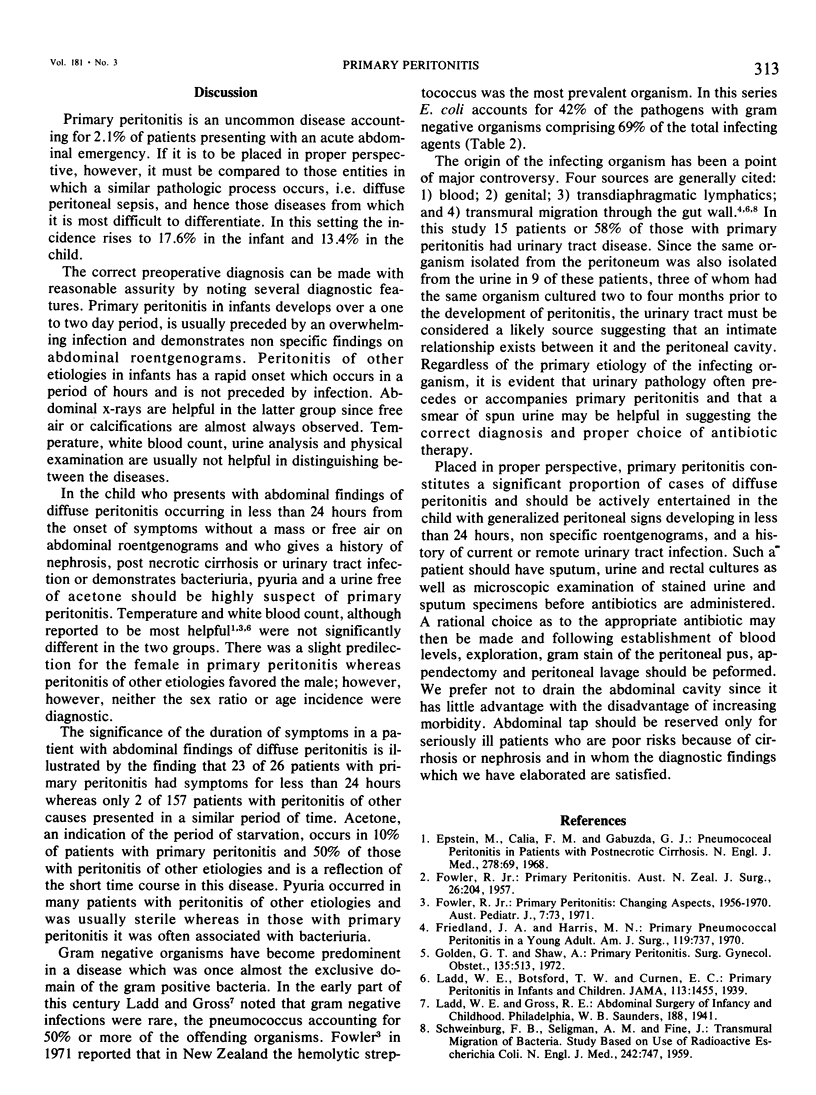Abstract
Primary peritonitis, rarely diagnosed preoperatively, is an uncommon disease accounting for 2.1% of all pediatric abdominal emergencies. It is often associated with urinary or hepatic pathology, the former the source of the infecting organism in the majority of cases, and presents with characteristic symptoms depending upon whether it occurs in infancy or childhood. The symptoms and signs which allow for a positive prospective diagnosis are illustrated by comparing this disease to those entities with which it is most often confused, e.g. diffuse peritonitis of other etiologies, and include a short duration of symptoms, associated urinary tract infection and an absence of free air on abdominal roentgenograms. In the past, gram positive organisms were the most common infecting agent; however, in this series gram negative bacteria accounted for 69% or the organisms. Antibiotics with a gram negative spectrum and exploratory laparotomy with appendectomy are the hallmarks of therapy, the latter replaced by abdominal tap only in the patient who satisfies the criteria for primary peritonitis and in whom an associated disease makes the risk of surgery prohibitive.
Full text
PDF



Selected References
These references are in PubMed. This may not be the complete list of references from this article.
- Epstein M., Calia F. M., Gabuzda G. J. Pneumococcal peritonitis in patients with postnecrotic cirrhosis. N Engl J Med. 1968 Jan 11;278(2):69–73. doi: 10.1056/NEJM196801112780202. [DOI] [PubMed] [Google Scholar]
- Fowler R. Primary peritonitis: changing aspects 1956-1970. Aust Paediatr J. 1971 Jun;7(2):73–83. [PubMed] [Google Scholar]
- Friedland J. A., Harris M. H. Primary pneumococcal peritonitis in a young adult. Am J Surg. 1970 Jun;119(6):737–739. doi: 10.1016/0002-9610(70)90251-5. [DOI] [PubMed] [Google Scholar]
- Golden G. T., Shaw A. Primary peritonitis. Surg Gynecol Obstet. 1972 Oct;135(4):513–516. [PubMed] [Google Scholar]
- SCHWEINBURG F. B., SELIGMAN A. M., FINE J. Transmural migration of intestinal bacteria; a study based on the use of radioactive Escherichia coli. N Engl J Med. 1950 May 11;242(19):747–751. doi: 10.1056/NEJM195005112421903. [DOI] [PubMed] [Google Scholar]


